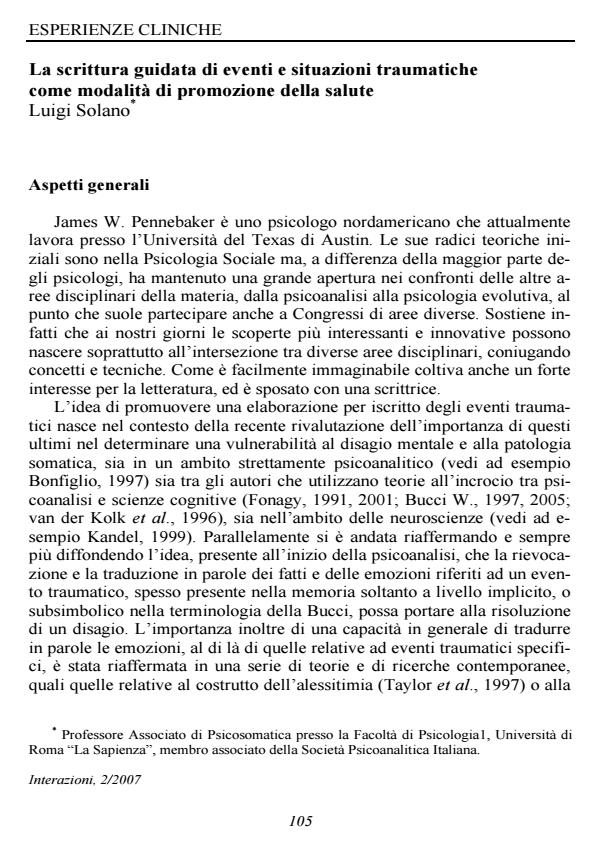La scrittura guidata di eventi e situazioni traumatiche come modalità di promozione della salute
Journal title INTERAZIONI
Author/s Luigi Solano
Publishing Year 2008 Issue 2007/2
Language Italian Pages 30 P. 105-134 File size 280 KB
DOI
DOI is like a bar code for intellectual property: to have more infomation
click here
Below, you can see the article first page
If you want to buy this article in PDF format, you can do it, following the instructions to buy download credits

FrancoAngeli is member of Publishers International Linking Association, Inc (PILA), a not-for-profit association which run the CrossRef service enabling links to and from online scholarly content.
The paper is a synthesis of results obtained through guided writing of traumatic events or situations following a technique proposed by James W. Pennebaker in the ’80s (3-4 sessions of about 20 minutes on subsequent days, following specific instructions). In the general population effects include fewer medical visits, improvement in the immune situation, improvement in academic proficiency, higher rates of reemployment, longer duration of couple relationships. In clinical populations the technique appears promising in situations where a positive outcome may be expected and where subjects may exert some influence. Possible modifications of instructions and procedures are also examined, as well as interactions with individual features of subjects involved. Finally tentative explanations of the effects of the technique are put forth, on the line of an improved cognitive/emotional processing of events and situations, and of a more general activation, with effects on subsequent events, of this processing capacity. The writing technique may be defined as a true modality for health promotion, since it can improve health state, capacities and performance also in the absence of conscious distress and of explicit help request on part of subjects.
Luigi Solano, La scrittura guidata di eventi e situazioni traumatiche come modalità di promozione della salute in "INTERAZIONI" 2/2007, pp 105-134, DOI: